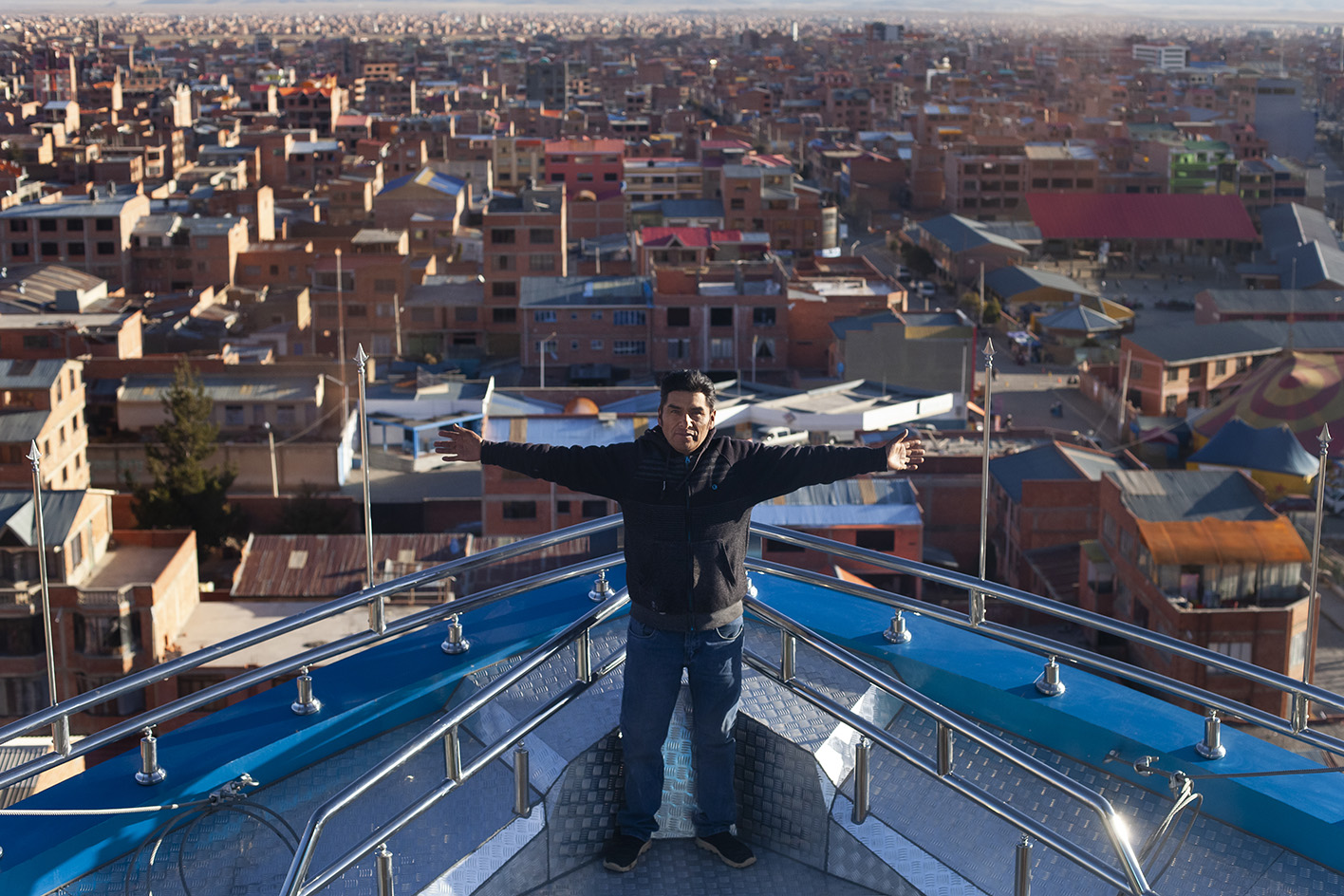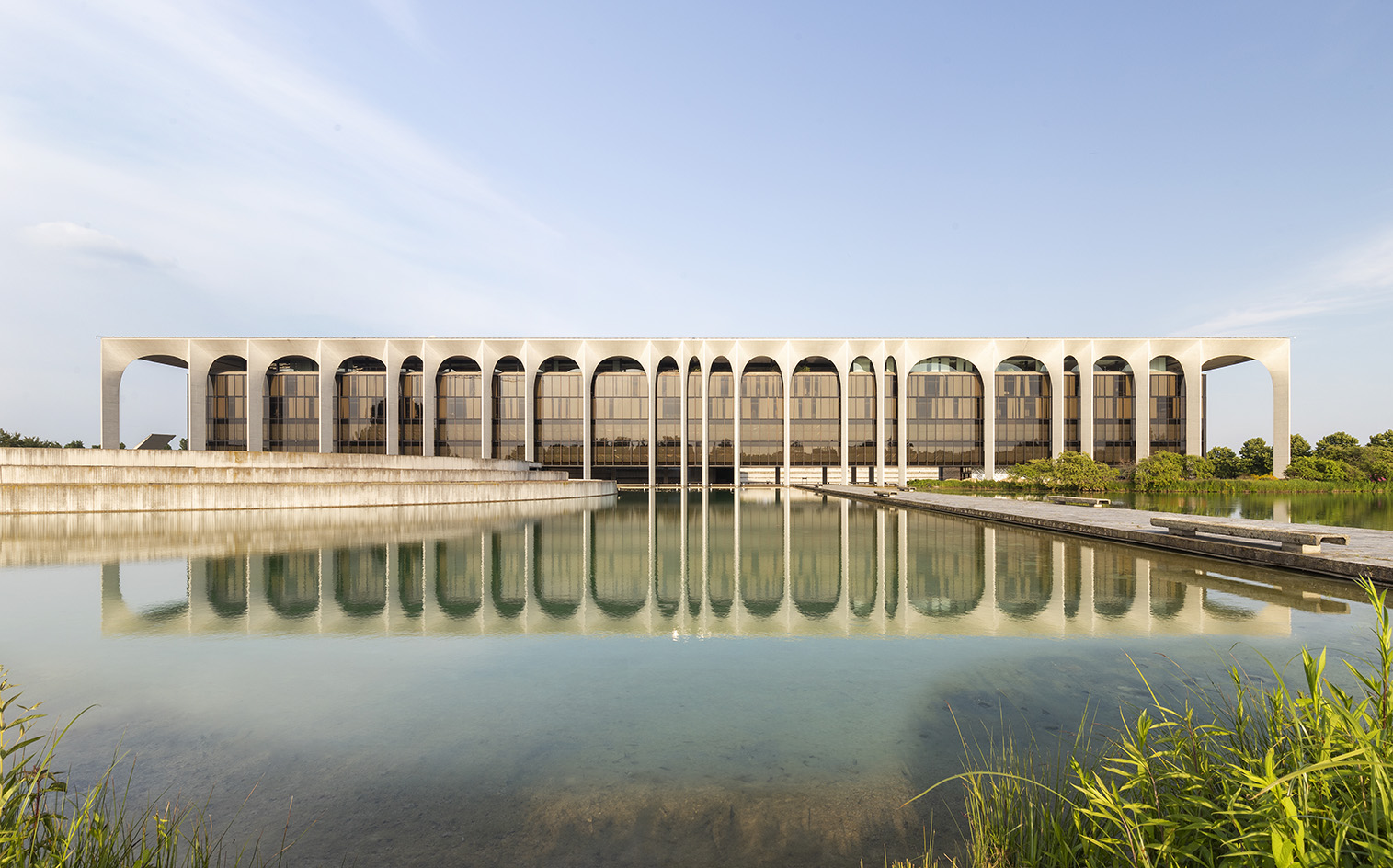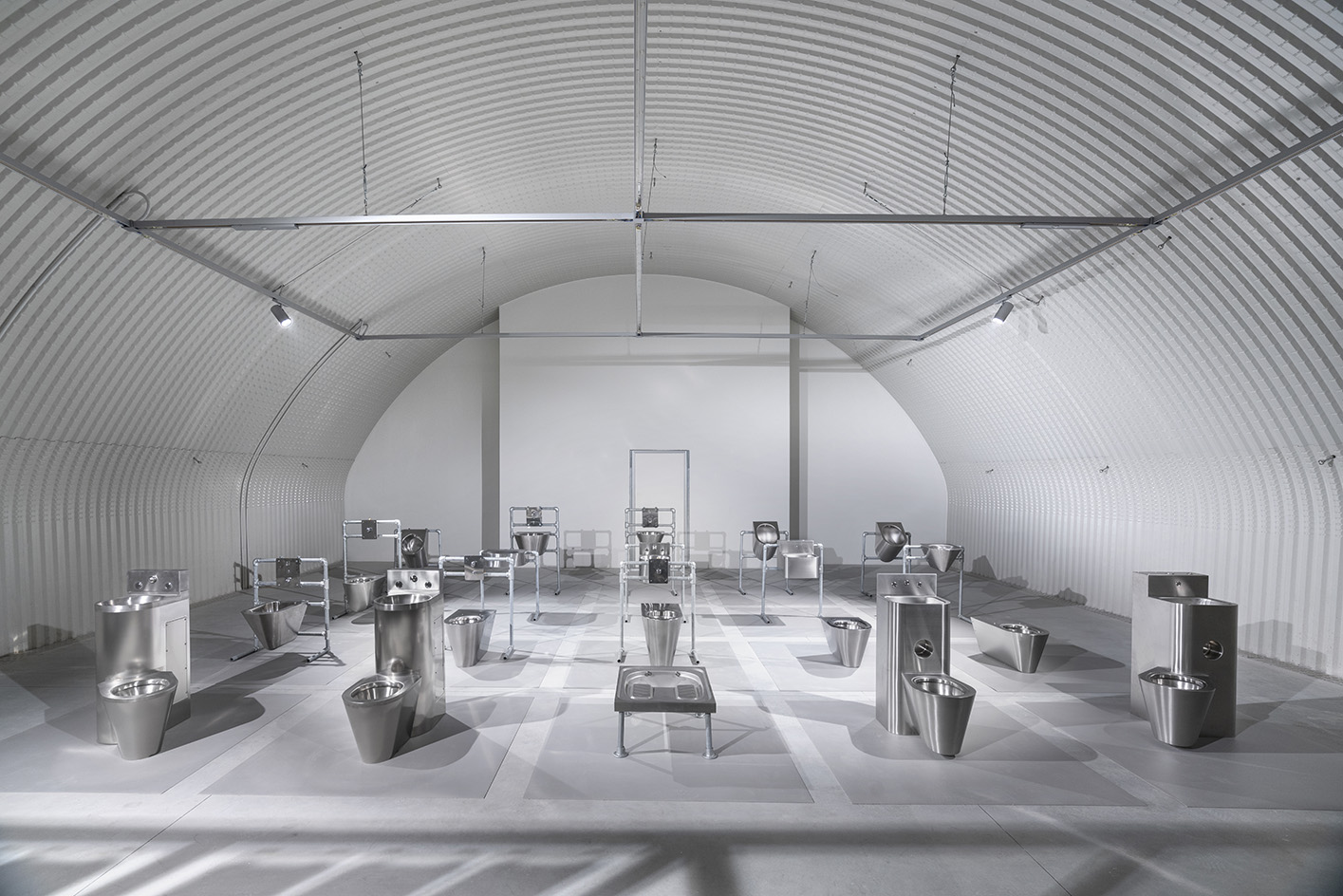Freddy Mamani on Neo-Andean architecture and bringing a cruise ship to Bolivia
We catch up with Bolivian architect Freddy Mamani at Focus: Radical Repair, the conference curated by The World Around and Fondation Cartier in Milan, to talk about Neo-Andean architecture and his latest project, el Crucero de los Andes

It was a rerouted flight that led architect Freddy Mamani – best known as the inventor of the Neo-Andean architecture style – to the inspiration for his latest project in his home city of El Alto. Returning to his native Bolivia after a trip to Paris, his plane was unexpectedly forced to land in the Canary Islands, just off the coast of Africa. Suddenly afforded some free time on a foreign island, he spent a few hours wandering along the port where he found, to his delight, towering cruise ships bound for the mainland lined up along the water’s edge like floating cities.
'In that moment I felt like a child,' Mamani says of the experience, explaining that growing up in landlocked Bolivia, boats of that scale were something only glimpsed in photographs. 'I wanted to give to the children of the city the same feeling.'

Freddy Mamani and el Crucero de los Andes
The resulting eleven-storey building, el Crucero de los Andes, comprises function rooms, a boutique hotel and a restaurant. It’s the first of his projects to stray from the now-iconic style he invented two decades ago. He’s moved on from his famed ‘cholets’ (a portmanteau of chalet and Chola, which refers to women wearing traditional local dress) and their intensely colourful façades formed of patterns and symbols inspired by ancient Tiwanaku architecture and traditional Aymaran aguayos textiles, and instead, atop an otherwise conventional multistorey block, placed a gleaming silver and blue ship that seemingly floats above the sprawling low-rise city.
Mamani is explaining his ideas in a conference room at Milan’s Triennale Design Museum. We sit down to chat after slowly making our way through its permanent collection, Mamani stopping occasionally to snap photos of a vintage Fiat 500 and 1970s-eras chairs by Jo Colombo. He’s travelled to Italy to present his work at the event curated by The World Around and Fondation Cartier. That evening in the museum’s theatre, Mamani would share the stage with other architectural luminaries such as Junya Ishigami and Jeanne Gang (winner of the 2023 Charlotte Perriand Award) to discuss the topic ‘Radical Repair’.

'The concept of Radical Repair is so well represented by Freddy’s practice,' architecture curator and co-founder of The World Around Beatrice Galilee tells Wallpaper*. 'On one hand, Neo-Andean is an absolutely singular vision for a non-Western architectural style that is visually so exciting and is charged with an inner drive for visibility and space for Aymaran identity, but it also puts architecture into a conversation with lifting communities out of poverty through the innovative financing model of construction and the spectacular event of the building itself.'
This new building, Mamani says, is a celebration of his native Aymara culture, the indigenous group that makes up 25 per cent of Bolivia's population. In fact, it will function largely as a cultural centre aimed at educating visitors about local traditions. Each of the hotel’s three floors is dedicated to a different aspect of Aymaran culture: the nearby Tiwanaku ruins; local folkloric elements such as dance; and an entire storey given oven to ‘Alasitas’, the yearly fair honouring the Aymaran god of abundance, where visitors buy objects in miniature to ensure good luck for the year ahead.

But when asked about the departure from the style he invented, Mamani likens the switch up to a musician experimenting with a new sound. 'The concept of building cholets has now been around for years,' he says. 'I had to make another leap according to the needs of the users.' But like all of Mamani’s projects, the design is still rife with a deeper meaning and cultural weight. He cites the longstanding dispute between Bolivia and neighbouring Chile over access to the Pacific Ocean, a tract of land Bolivia lost in the War of the Pacific in 1879, as another source of inspiration. 'I believe architecture can give strength to political, cultural and economic issues,' says Mamani.
Receive our daily digest of inspiration, escapism and design stories from around the world direct to your inbox.
As for the day-to-day, he sees el Crucero de los Andes as a place to gather, both for local residents and passing tourists who may be curious about the region’s culture and history. 'We built this,' he adds, 'so people will understand a little bit more of what Bolivia is.'
Laura May Todd, Wallpaper's Milan Editor, based in the city, is a Canadian-born journalist covering design, architecture and style. She regularly contributes to a range of international publications, including T: The New York Times Style Magazine, Architectural Digest, Elle Decor, Azure and Sight Unseen, and is about to publish a book on Italian interiors.
-
 Click to buy: how will we buy watches in 2026?
Click to buy: how will we buy watches in 2026?Time was when a watch was bought only in a shop - the trying on was all part of the 'white glove' sales experience. But can the watch industry really put off the digital world any longer?
-
 Don't miss these art exhibitions to see in January
Don't miss these art exhibitions to see in JanuaryStart the year with an inspiring dose of culture - here are the best things to see in January
-
 Unmissable fashion exhibitions to add to your calendar in 2026
Unmissable fashion exhibitions to add to your calendar in 2026From a trip back to the 1990s at Tate Britain to retrospectives on Schiaparelli, Madame Grès and Vivienne Westwood, 2026 looks set to continue the renaissance of the fashion exhibition
-
 Modernist Palazzo Mondadori’s workspace gets a playful Carlo Ratti refresh
Modernist Palazzo Mondadori’s workspace gets a playful Carlo Ratti refreshArchitect Carlo Ratti reimagines the offices in Palazzo Mondadori, the seminal work by Brazilian master Oscar Niemeyer in Milan
-
 Step inside Casa Moncler, the brand’s sustainable and highly creative Milanese HQ
Step inside Casa Moncler, the brand’s sustainable and highly creative Milanese HQCasa Moncler opens its doors in a masterfully reimagined Milanese industrial site, blending modern minimalism and heritage, courtesy of ACPV Architects Antonio Citterio Patricia Viel
-
 The 2026 Winter Olympics Village is complete. Take a look inside
The 2026 Winter Olympics Village is complete. Take a look insideAhead of the 2026 Winter Olympics, taking place in Milan in February, the new Olympic Village Plaza is set to be a bustling community hub, designed by Skidmore, Owings & Merrill
-
 Anni Albers' weaving magic offers a delightful 2-in-1 modernist showcase in Milan
Anni Albers' weaving magic offers a delightful 2-in-1 modernist showcase in MilanA Milan Design Week showcase of Anni Albers’ weaving work, brought to life by Dedar with the Josef & Anni Albers Foundation, brings visitors to modernist icon, the BBPR-designed Torre Velasca
-
 Milan Design Week: ‘A Beat of Water’ highlights the power of the precious natural resource
Milan Design Week: ‘A Beat of Water’ highlights the power of the precious natural resource‘A Beat of Water’ by BIG - Bjarke Ingels Group and Roca zooms in on water and its power – from natural element to valuable resource, touching on sustainability and consumption
-
 This Milan Design Week installation invites you to tread barefoot inside a palazzo
This Milan Design Week installation invites you to tread barefoot inside a palazzoAt Palazzo Litta, Moscapartners and Byoung Cho launch a contemplative installation on the theme of migration
-
 Milan Design Week: Dropcity challenges detention space design with 'Prison Times'
Milan Design Week: Dropcity challenges detention space design with 'Prison Times'Dropcity's inaugural exhibition 'Prison Times – Spatial Dynamics of Penal Environments', opens a few days before the launch of Milan Design Week and discusses penal environments and their spatial design
-
 New Aesop Milan store is a haven of beauty and tranquillity
New Aesop Milan store is a haven of beauty and tranquillityThe latest Aesop Milan store to open is a hub of wellness, beauty and tranquillity in the Italian metropolis